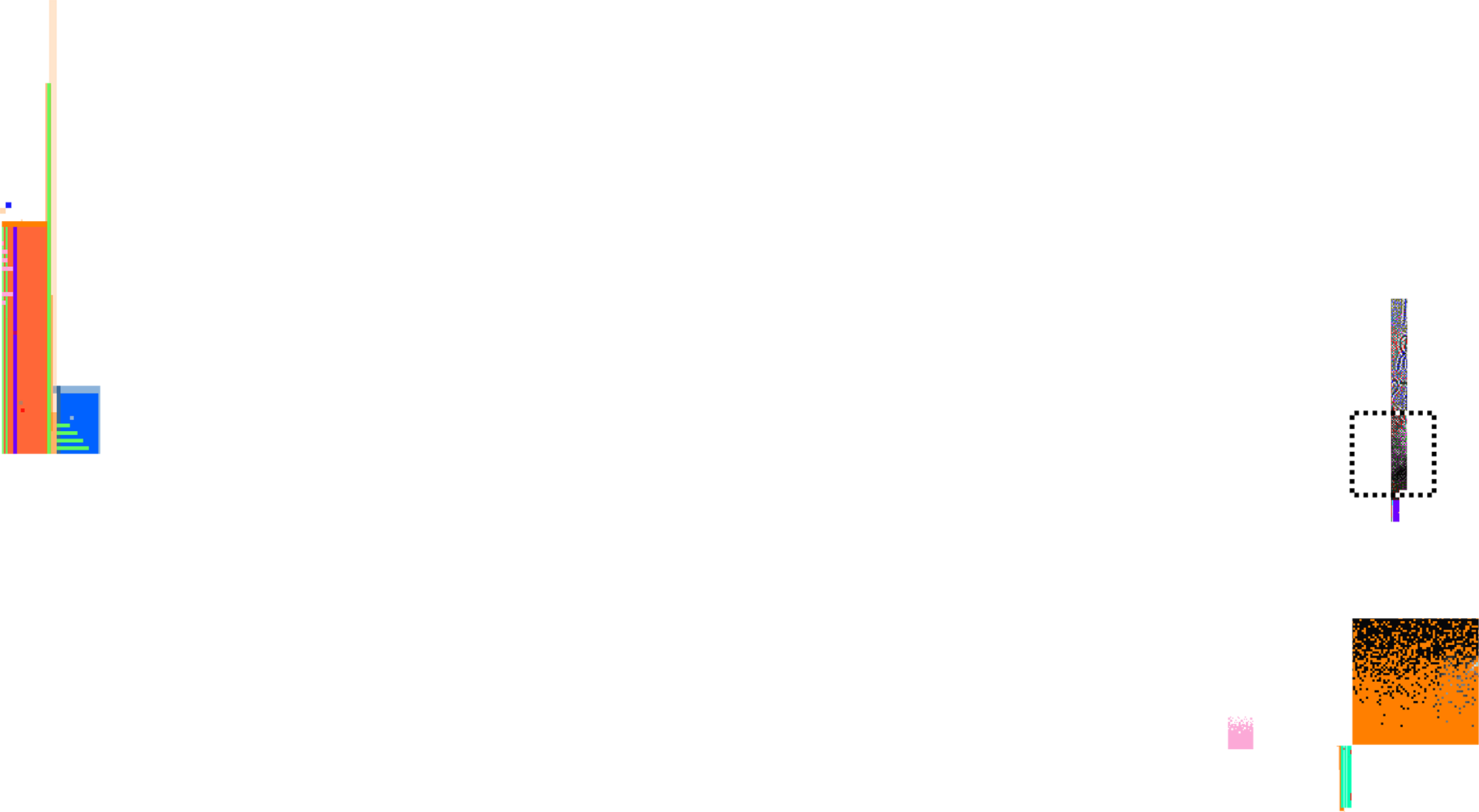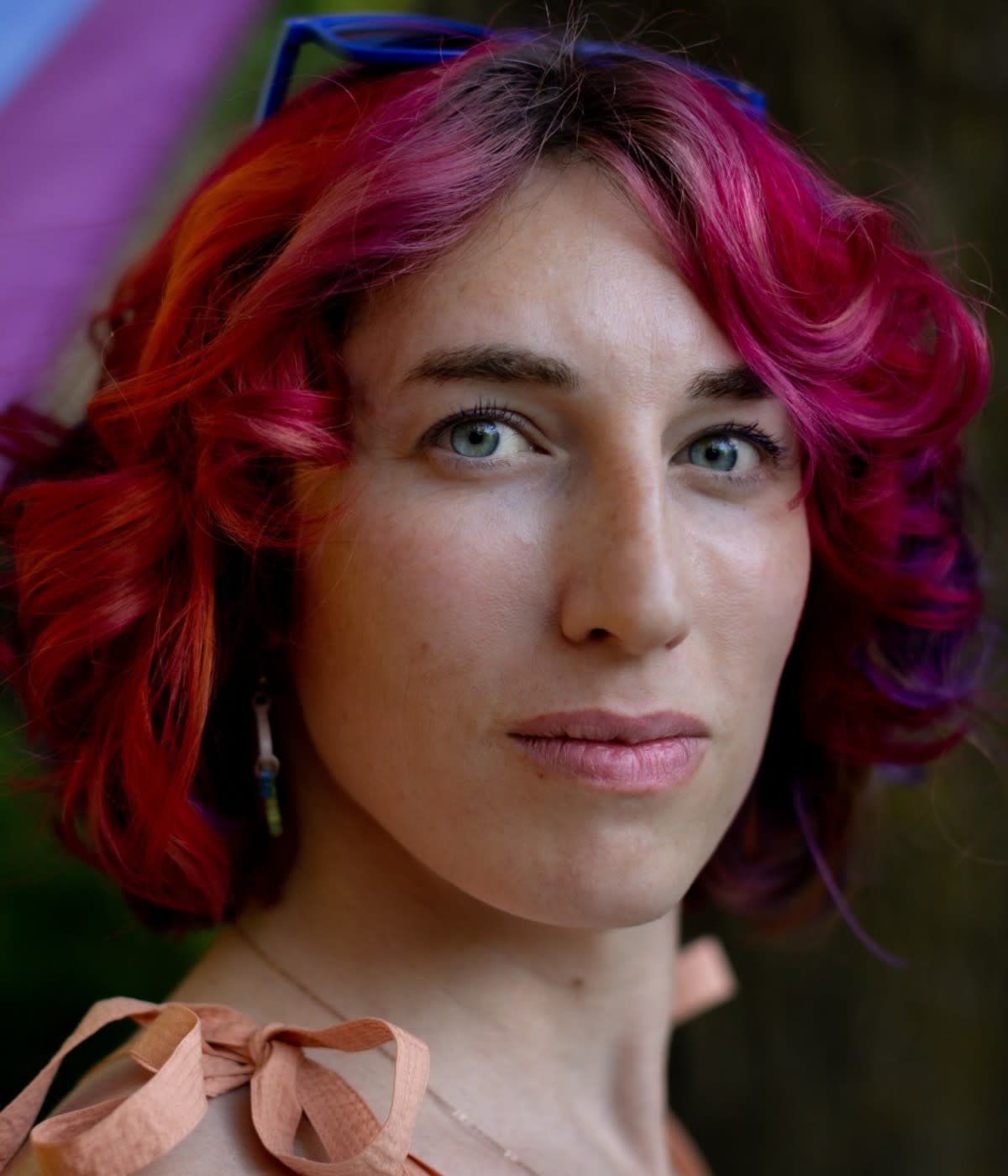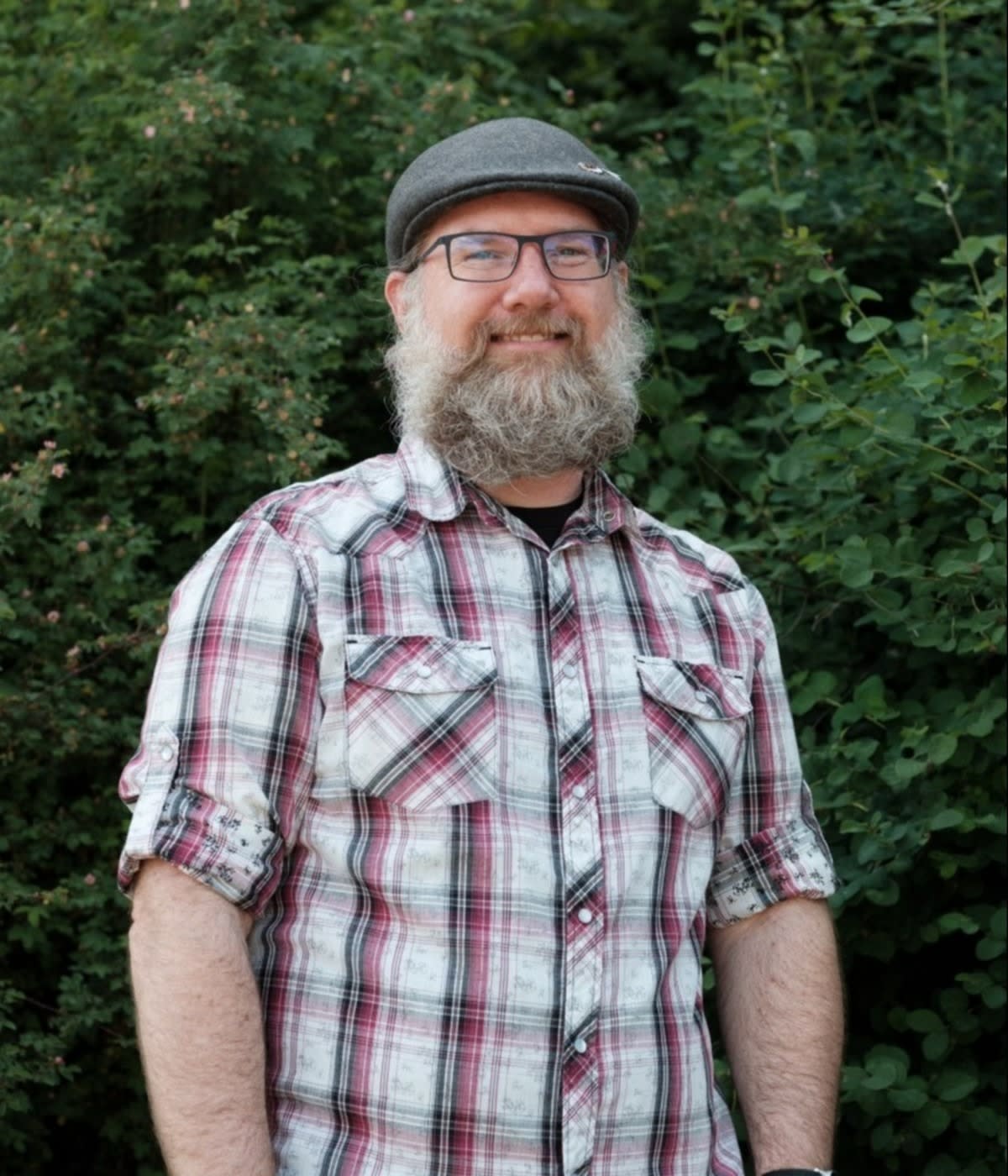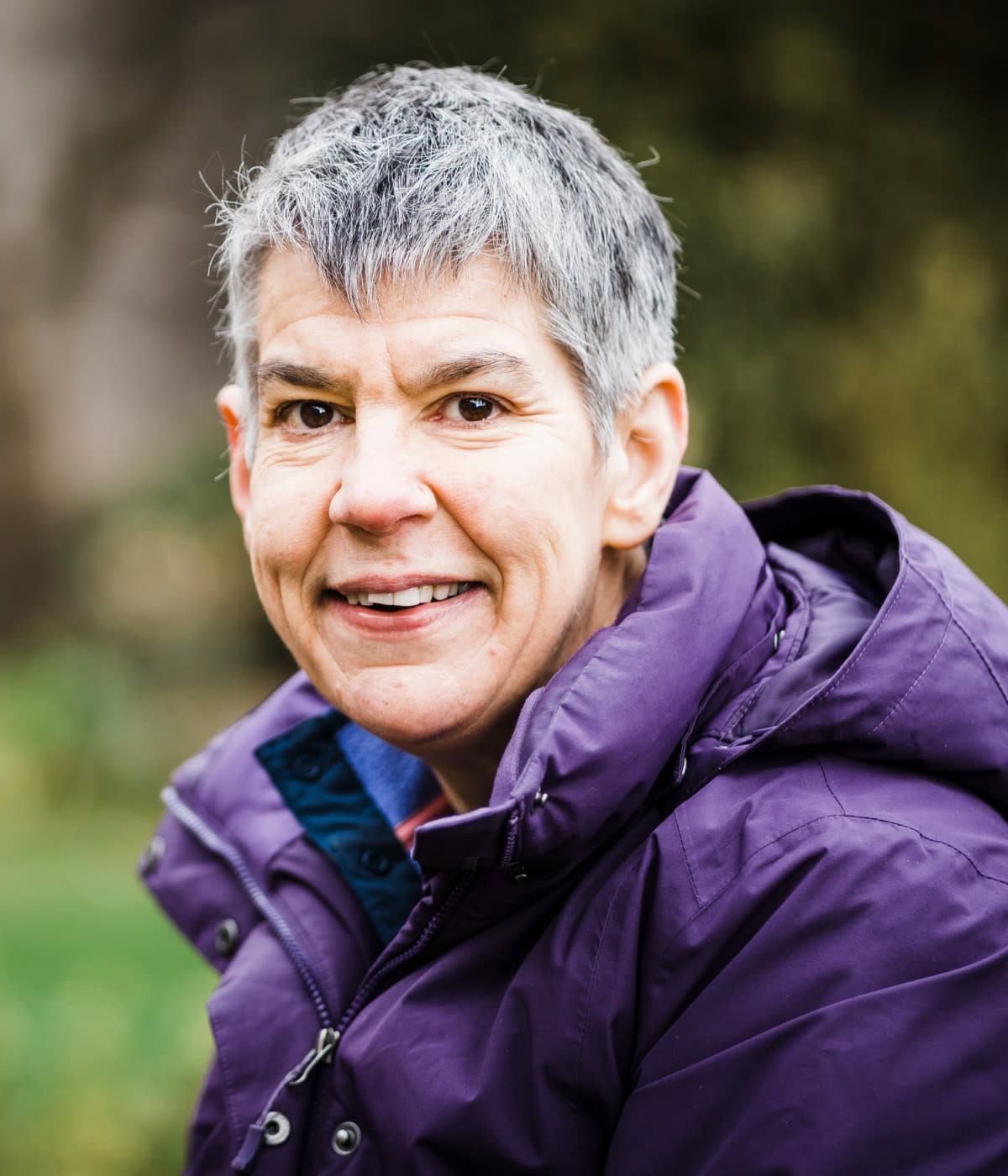When I was three or four years old, I would sit across from my father at the DOS machine. I didn’t know how to write or read, but I did know what to type in the DOS command line to start my favorite game, which was Prince of Persia (where the prince saves the princess).
As soon as I got a Nintendo 64, I played The Legend of Zelda, and, again, the guy saved the princess. Then Super Mario. In every instance, the prince saved the princess. Eventually, I had this crazy thought: Could I make my own games where the prince saved a prince? Or the princess saved the prince?
People I grew up around—including my teachers—often told me I shouldn’t study computer science. But having access to that PC so early really encouraged me: I could experiment without the fear of doing something wrong.
As a child, I always wanted to draw or write creatively, but was never any good. As I got older, I was intrigued by the world of games, but there wasn’t a game development program at our university. From what I knew, computer science meant going to the basement, eating pizza, and sitting in front of a black screen. But computer science was the best available option at my university, so that’s what I studied.
Most people still don’t understand computer science. I didn’t, and was surprised how much math was involved in the beginning, and how much harder it felt like I was working compared to my friends who had more experience. But suddenly the math was so much easier to understand with so many examples of how to actually use and apply it. But as soon as I finished the base degree, I realized I could take the thoughts and dreams I had in my head and create these beautiful, artistic worlds, then explore and walk around in them. I could suddenly see that every field I was always interested in—psychology, medicine, sociology, physics—was accessible through computer science. This is so important to explain, especially to young girls and women: With a foundation of computer science, you can work in so many areas.

Inspired to give everyone the MIT experience
I finished my master thesis on collaborative virtual world environments during a research visit at Massachusetts Institute of Technology (MIT), then started my PhD in Austria. We explored the potential of game engines and tools to make physics experiments, physics simulations, and physics laboratories—and it escalated quite quickly.
When I was in high school, we did not have many physics experiments, let alone a dedicated classroom, so my interest fizzled. But for my thesis, I was able to work with the TU Graz e-learning expert Christian Gütl and a really brilliant MIT physicist, John Belcher, who is now a professor emeritus. Belcher showed me the physics laboratories at MIT, which cost about $1.5 million dollars each.
I thought it was the most natural thing working in virtual laboratories. But after that visit, I wanted the pedagogical model. I fell in love and wished I could have had access to such an amazing place when I was learning. There’s so much power and inspiration in the moment you see a science experiment come to life: Everything you’ve only seen as formulas is suddenly visible. I wanted to conduct all the experiments and have that feeling of learning with others. I wanted to enable everyone to learn like that: Not only those with a lot of money, very dedicated teachers, or super fancy classrooms.
Everyone should have access to this kind of education. It should be open to everyone. That’s why I was always intrigued not only by open source, but open content. I am super privileged to live in a country where we have a high average income and social security system. But open learning content is paramount. What if we could make this available for people who are interested and want to self-teach at home? Could we make this kind of learning more accessible?

Carving her own teaching path and prioritizing diversity
Game education didn’t exist at my university before I arrived, but as I started teaching, I saw an opportunity to introduce it as a new field of study. Now I’m on a tenure track for games engineering.
Currently, I mainly teach game design and development, as well as social media technology. I live in two worlds. One is the design and development world where we develop games and virtual experiences. The second one is data analysis, digging into graph theory and making sense out of social connections.
I’m currently leading at Game Lab Graz, where I have 13 employees. We design and develop virtual experiences, then analyze and try to make sense of the data. It’s quite interesting to see how people behave in a multi-user game, like Destiny or League of Legends. Playing with friends or strangers can be motivating and connections can become real friendships over time. We want to understand how we can use those insights, and maybe even translate them to our real society.
My lectures have a strong focus on inclusivity, accessibility, and diversity. My students need to follow accessibility guidelines and think about how they can make different decisions—like not always making the male the hero. I want them to reconsider what they think they know, and make it all more inclusive.
There might not always be a negative bias on purpose, but as soon as you put together a diverse team with women and under-represented groups, you get people suggesting new, different, and more inclusive storylines and messages. As soon as we can, we test it on ourselves and go through a very intentional checklist to avoid unintentional bias mistakes that others have made in the past.
There are always two ways: Either you step down or step up. And I want to make sure we’re always stepping up.

Amplifying connections on Twitch
One of the most well-known projects from me and my students is the Maroon Project. It’s a virtual laboratory space that’s actually a learning management system. It started off as this physics laboratory, but now it’s a very sophisticated learning management system for 3D spaces. This even made it onto Forbes’ 30 Under 30 list!
Maroon works in real time, and you can explore the lab and run a slew of experiments. It’s organized by one of my PhD students, Michel Holly. Everything once had the feel of a basement without any windows—and we didn’t care because we were focused on our simulations. But then we got our interns for the year (who we welcome from a local girls’ high school), and they said, “Sorry, but we cannot learn in that. This is just ugly.” So they helped to overhaul the environmental design and add windows to fill the space with virtual daylight. Now it’s really lovely.
I love open education, and always loved MIT because classes are open to the public. So instead of giving my lectures on WebEx or Zoom during the pandemic, I moved everything to Twitch—and the best thing happened. Whereas I might have had 140 students before, I now had 400 people listening all at once. Instead of 30 minutes of lectures, my lectures would take 90 minutes because there were so many more questions and interactions. The way of teaching changed so much, and for the better. We started off with everything in virtual reality (VR), but because of the pandemic, we wanted to make it as accessible as possible, so now it’s also available in a web browser.

Building a better virtual reality
There are so many benefits to VR that we can’t do with other techniques or technologies. You can both see and feel things you might not be able to otherwise. It’s also pretty natural. We’re used to a mouse and keyboard, but if you think about it, that was invented years ago and never really evolved. But there are so many more natural ways to interact with experiences. We see this especially when we’re working with very old or very young people. You have to explain how to use a mouse and keyboard. But you give an old person with dementia VR controllers and they intuitively know how to interact with it. Same with younger people.
Back in the beginning, we had this idea to democratize VR development. Users could “easily” create virtual reality experiences with software development kits—but there were no design or development guidelines. Putting out the hardware—like in the case of Oculus with an open API—is nice, because everyone can develop. But if everyone can develop VR, but there’s no thought to the experience of it, it can get messy. For example, everyone figured a roller coaster would be a great VR experience. But it wasn’t, people got motion sickness, and many hated it. Thankfully, it’s so different now.
VR will be a huge part of society, especially for learning and therapy. It’s going to transform education. The headsets have become more affordable, so my hope is for schools to have dedicated VR labs. Most schools have some kind of lab, maybe it has some physics, some chemistry—but with VR, you could have both. You can teach a geography class on Mount Everest. A history class in Washington, D.C.
There’s already a lot of porn in this space. And there’s this saying that, as soon as the porn and gambling industries put money into something, it’ll get successful. We have so many conversations about the metaverse happening right now, even though I don’t think many people really understand what it will be—or what it might be—or the implications. What I see happening is similar to the roller coaster: People are getting a little sick and dizzy. So we really need to think about these experiences.
This includes sexism, ableism, and racism. As soon as you log in and have a virtual body, there might be a person who thinks they can touch your virtual body. The good and bad thing about VR is immersion. You think you’re really there. So it’s great in the lab doing an experiment. But if you’re harassed on VR, it still can lead to real trauma. So we need to be careful.
The thing that excites me most about virtual reality is we can do things we can’t in real life. All of a sudden we can include people who are always excluded from our society. Like someone who can’t leave their home because they’re in a wheelchair: Now they can work in a bar or walk into a normal shop in the digital world. And we can build thoughtfully, inclusively, and in an accessible way to ensure the virtual environment is better and more inclusive than the real world.






